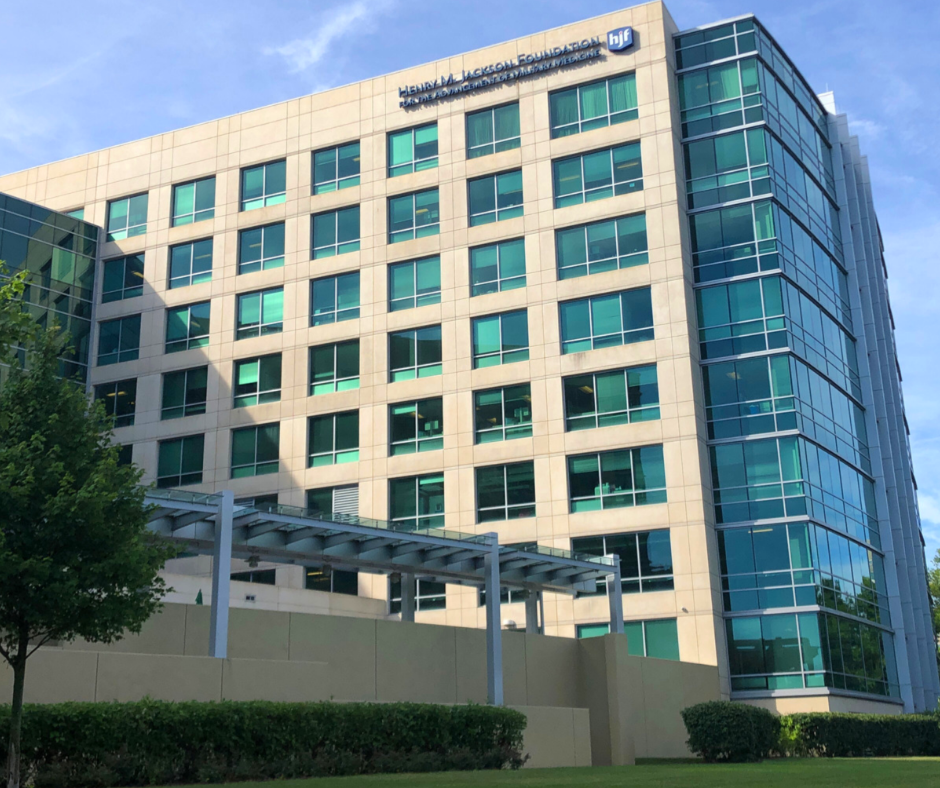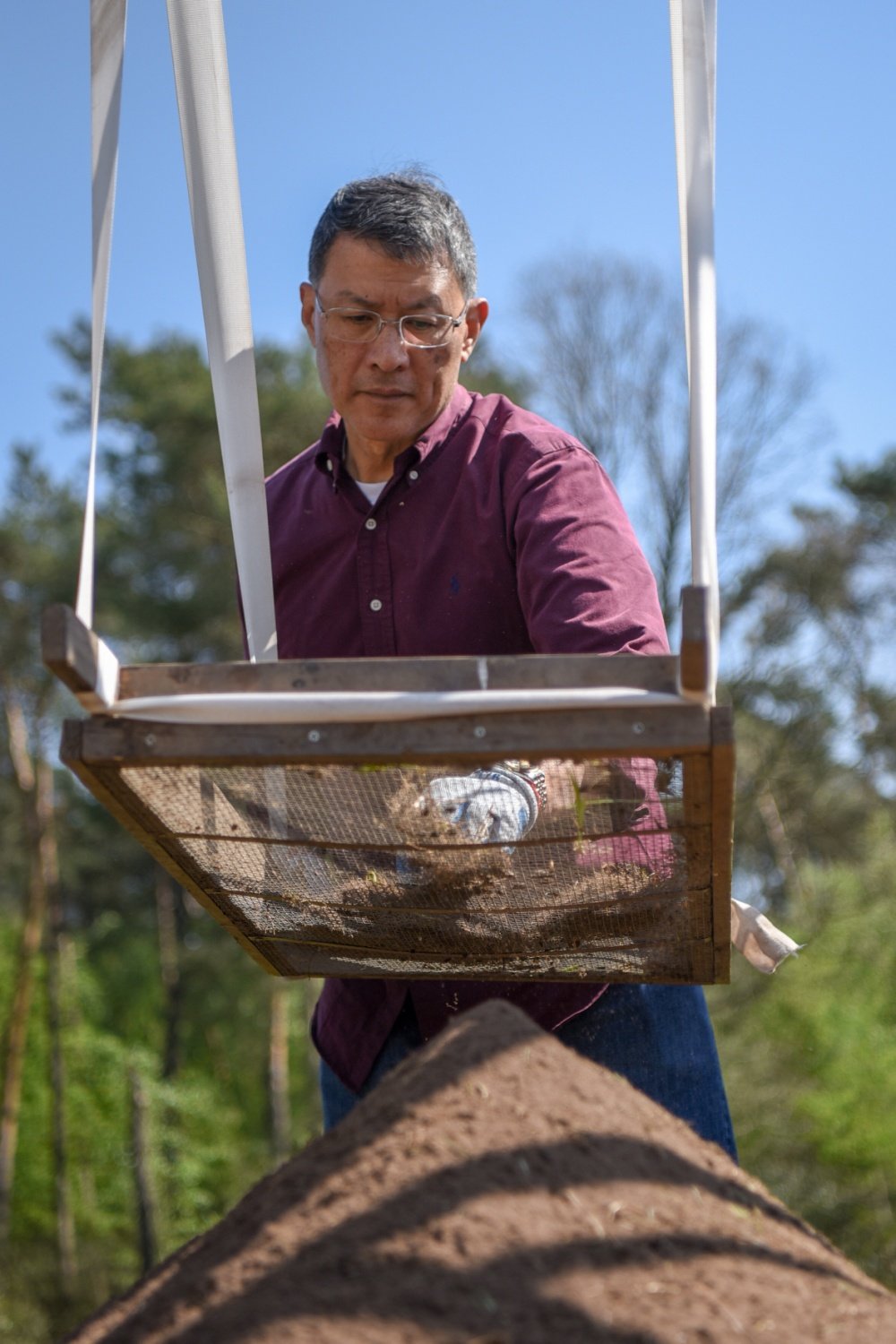
The Bethesda, MD, headquarters of the Henry M. Jackson. Foundation.
It’s been called the silent killer, yet the ravages of inflammatory breast cancer can be seen everywhere—in the head-shaved woman pushing a pram along the sidewalk; and in the worried expression of a 71-year-old grandmother vaulting into chemotherapy and radiation treatments.
Men are not exempt from the dialogue. This year alone, more than 2,500 males of all ages and races are expected to develop cancer in their breast cells and tissue and an estimated 281,550 new cases of invasive breast cancer will be diagnosed in women across the U.S.
Amid this harsh reality, significant advances in cancer research are emerging, not only in treatment and care, but also within the areas of diagnosis and prevention. These developments are underwritten in no small part by the U.S. military working in collaboration with non-profit organizations like the Henry M. Jackson Foundation for the Advancement of Military Medicine (HJF), based in Bethesda, MD.
HJF and the federally funded Uniformed Services University of the Health Sciences (USU), are hurdling translational scientific research forward through the Murtha Cancer Center Research Program’s Clinical Breast Care Project. By compiling the breast tumor tissue specimen from cases seen within the military health system over years, researchers are creating a large, powerful repository of patient cases by which to detect breast cancer in its early stages.
“It’s always been the military’s interest to focus on prevention and early detection,” said Dr. Joseph Caravalho, Jr., president and chief executive officer of HJF.

HJF President and CEO Army Maj. Gen. (Ret.) Dr. Joseph Caravalho.
At the core of HJF’s mission is making the soldier deployable, standing up a warfighting force capable of meeting the challenges of battle—physically, emotionally, and mentally, a mandate that’s becoming increasingly gender-specific, as women continue to enter the service.
In 1973, after the draft ended, two percent of enlisted forces were female. Today, that figure has risen to 16 percent.
In its effort to advance women’s health within the military, HJF wages a highly modernized war on breast cancer. Their comrade-in-arms are partners within the public, private, academic and medical sectors. Their tactical approach ranges from $10,000 campaigns to programs costing tens of millions of dollars. Every breast cancer initiative supports the “Life is Good” mantra symbolized by an all-too-familiar pink ribbon.
Riding the rim of artificial intelligence, HJF has lately joined forces with Google Health and the Naval Medical Center San Diego to develop AI models that augment the work of lab pathologists studying breast cancer tumors. By identifying three key biomarkers, a researcher can pinpoint the exact nature of the cancer cells being displayed on a scan or slide and help determine which ones multiply more aggressively than others. Such critical data ultimately translates into a clinician being able to treat his or her patient with greater specificity.
Improving patient outcomes forms the spine of HJF in its mission to advance military medicine. Operating within layers of complexity, at times navigating research programs shaped as much by questions as by answers, HJF continues its 38-year journey toward developing potential—collaborating with talent in program management to laboratory research, one eye toward removing barriers within the medical research community.
Meaningful collaborations are key—the ability to optimize resources and leverage expertise, translating new technologies into therapies through a wide-range of funding sources.
For the past several years, HJF has worked with Leonardo DRS, a defense electronics firm in Arlington, VA, in support of initiatives like the “Stick it to Cancer” campaign that has funded the “Look Good Feel Better” program, which teaches beauty techniques to breast cancer patients and survivors, helping them cope with difficult emotions and assisting them in the appearance-related side effects of cancer treatment.
“We’ve been privileged and honored to work with Leonardo DRS in support of those who may be impacted by breast cancer or to help all of those who might be at risk of the disease,” said Caravalho.
Said William J. Lynn, Leonardo DRS CEO, “Once again, we are proud to partner with Henry M. Jackson Foundation for the Advancement of Military Medicine and their important work helping members of the military and their families deal with breast cancer. We are honored to be able to help this big-hearted program, which continues to have a positive impact on people’s lives.”
Well-positioned to orchestrate enterprises on multiple tiers, HJF continues its work managing the funding between the Uniformed Services University of the Health Sciences, the Murtha Cancer Center Research Program and the Windber Research Institute through the joint Clinical Breast Care Project. The patient-centered program brings surgeons, oncologists, and psychologists together under one roof, providing a multidisciplinary approach to breast cancer treatment.
At times, ideas are generated from within HJF. In other cases, HJF becomes the conduit through which foreign governments, non-profits, NGOs and private industry connect with existing programs. In all, more than $500 million of medical research funds are administered each year by the non-profit organization, with administrators piecing together the many, different entities involved in decoding the mysteries of human biology.
Despite significant progress in treating breast cancer, the disease remains one of the leading causes of mortality worldwide.
“I’d like to say three things about breast cancer awareness,” said Caravalho.
“One is that prevention is absolutely the best approach to breast cancer management. Number two, I encourage everyone to exercise self-exams, regular physician visits, and routine scans to increase their chances of early detection. And then finally, whether a military service member or not, whether a woman or man, strong personal involvement is imperative to good health.





















